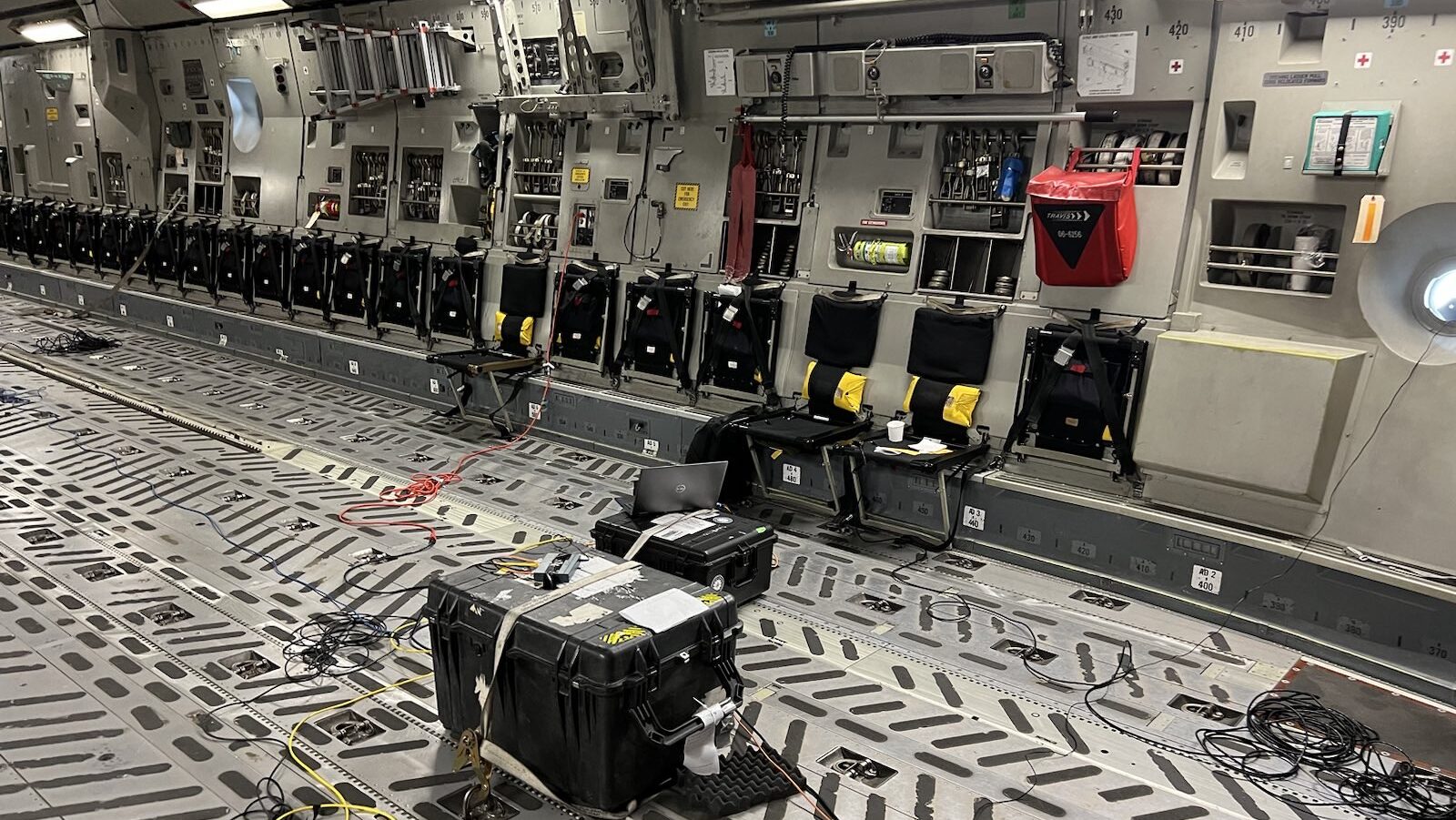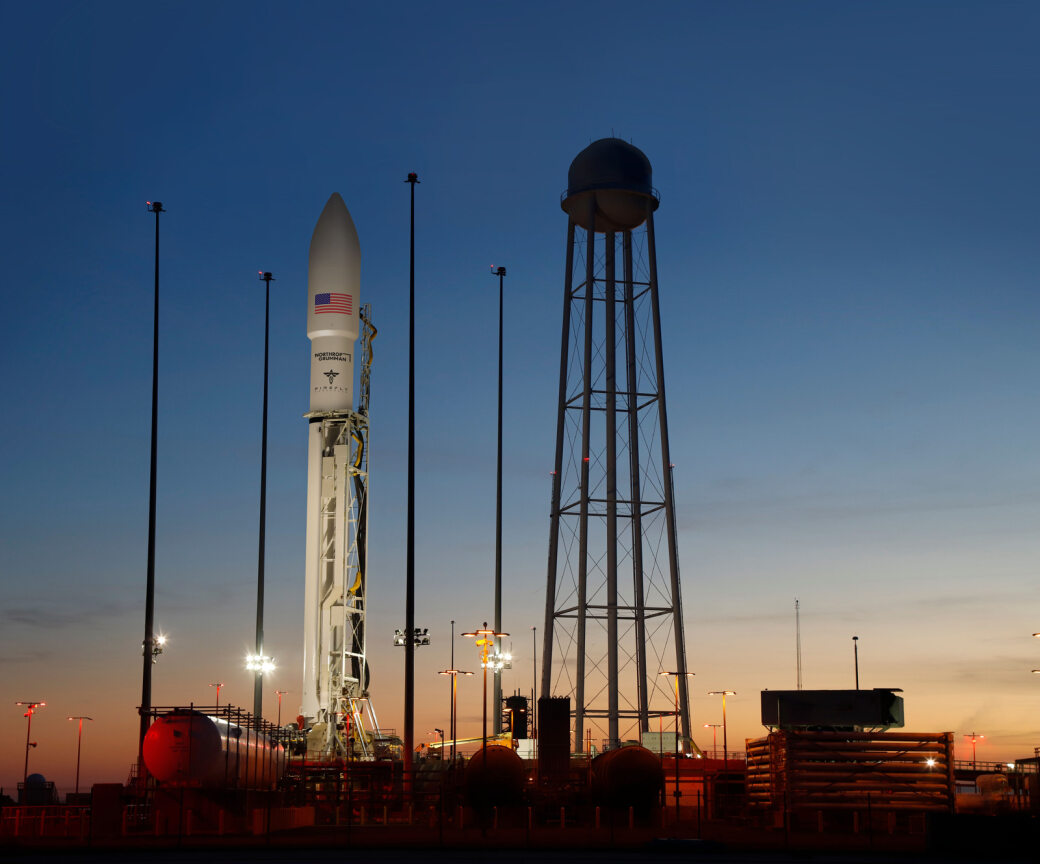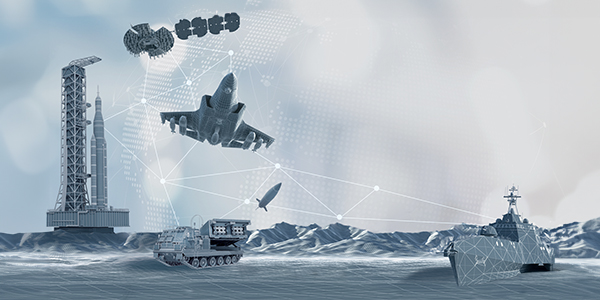
The Air Force’s MAGNAV experiment tested quantum magnetometer, a potential alternative to GPS guidance, aboard a C-17 cargo jet. (Air Force photo)
WASHINGTON — Ask the average moviegoing American about quantum technology, and the first response will probably relate to Marvel’s Ant-Man. Ask someone in tech or policy, and they’ll probably focus on quantum computing, which exploits the exotic behavior of subatomic particles to do calculations in new and more efficient ways — potentially including cracking once unbreakable codes.
But there are other applications of quantum science, less publicized and much less well funded, that could help the military in multiple ways. It could detect enemy submarines or terrorist tunnels, guide navigation when GPS is jammed or unavailable, or detect vital radio transmissions when the signal is weak and interference strong.
The hard part is turning promising research projects into rugged operational systems, hand-made one-offs into mass-produced equipment. And, warns a new report from the Air Force Association’s in-house thinktank, Mitchell Institute, the Defense Department’s current approach won’t bridge the gap.
There’s a fundamental mismatch between how the Pentagon usually tries to harvest private-sector innovations and how quantum sensing, navigation and communication have evolved, said lead author Heather “Lucky” Penney, a former fighter pilot turned national security analyst.
“The DoD really needs to take charge here, because they can’t treat the quantum industrial base like it’s their regular industrial base,” she told reporters at a Monday briefing in advance of the report’s formal rollout today. “Small startups, which are usually spun out of universities … really dominate the landscape.”
That’s the kind of decentralized, civilian-driven innovation that the Pentagon has created multiple outreach offices to support: the Defense Innovation Unit, the Air Force’s AFWERX and SPACEWERX, and more. But, Penney explained, these organizations provide relatively small amounts of funding — often through the Small Business Innovation Research program — and expect civilian customers to drive most of the demand, with the military spin-off piggybacking on private funding.
“They require a commercial market,” Penney said. “It needs to be dual-use technology.”
That works great for a lot of software development, robotics and computing, including quantum computing, where tremendous commercial demand has poured billions into new technology. But with ubiquitous GPS and proliferating 5G networks, and a lack of civilian concern about being jammed by Russia or China, there’s little commercial interest in quantum-based alternatives for navigation and communication. Civilian applications of quantum sensing, meanwhile, do exist in niches like oil and gas exploration, but their performance standards are very different from what would be required in combat.
Without the billions of dollars in civilian investment that have gone into quantum computing, Penney said, DIU, AFWERX, et al just don’t provide sufficient funding to move quantum sensing, navigation and communications out of the lab.
“Right now … a lot of quantum hardware is essentially hand-built,” Penney said. At one so-called “factory” she visited, “it was about six stations of humans doing really artisanal stuff. You can’t scale that.”
What’s more, she said, building quantum tech is less like writing software — which requires skilled people and powerful computers — and more like manufacturing semiconductor ships. Not only do manufacturers need skilled workers and powerful computers, as in the software business, they also need specialized tooling and large facilities that can cost a billion dollars to set up.
That’s a formidable barrier to entry. So how’s it going? Well, Penney said, not great. In fact, her research found just one successful example of field-testing one of these quantum technologies on a real-world combat system.
That was a 2023 collaboration known as Magnetic Navigation (MAGNAV) between MIT, Air Force Research Laboratory, and Air Mobility Command which flew an experimental MIT-AFRL quantum magnetometer aboard an AMC C-17 jet transport. MAGNAV proved, in principle, that the quantum sensor could pick up subtle variations in the earth’s magnetic field — using AI algorithms to factor out the interference of the aircraft systems all around it — and calculate the plane’s location without relying on GPS.
“They were able to effectively do that within one square kilometer,” Penny said. “Given the fact that this was the first time on the road, that’s very impressive.”
MAGNAV is the model for other quantum projects to follow, Penney said, not just in the Air Force but across the services and with allies, like the Australia-UK-US (AUKUS) triad. But they need to go much further, from a small-scale experiment to a full-up procurement program.
Only then can DoD “move the industrial base past experiments and lab-in-a-box,” she said. “An acquisition program of record is urgently needed if US policymakers are serious about quantum and fielding it to their warfighters.”
It’s not just a matter of funding, she underlined, although funding definitely matters. It’s also about institutional support and the rigorous technical requirements of actually having to make your cool lab project function on a specific military platform — a plane, a ship, a tank and so on — in a specific set of real-world conditions.
“You don’t know what you don’t know until you identity your host platform and identify the requirements,” Penney said. And those formal, binding requirements only come when a technology moves out of research into acquisition.
So, asked one reporter, which program of record should DoD start with?
“Can I have three? I want three,” Penney shot back. “Getting something started anywhere will help everything, but I would focus on timing … quantum inertial sensors … [and radio frequency] receivers.”
One program would follow up on MAGNAV by using quantum magnetometers to guide a new generation of inertial navigation systems, allow far more precise navigation in the absence of GPS. One would use quantum clocks, which keep time much more precisely than older atomic clocks, for a host of purposes where exact timing is essential, from navigation to communications networks and electronic warfare. And one would use high-energy atoms — excited into what’s known as a Rydberg state — to act as ultra-sensitive radio receivers. (Rydberg atoms are also potentially useful for quantum computing).
“DoD needs to grow their quantum industrial base through real programs of record,” Penny emphasized. “I cannot foot-stomp that enough.”












